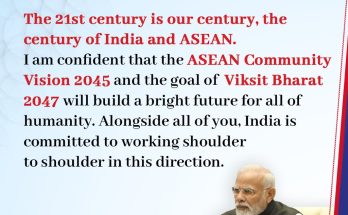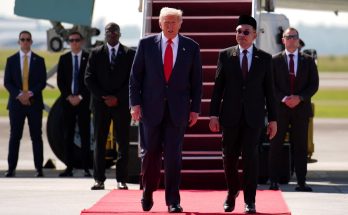 The quest for clean, cheap commercial energy just took on an international dimension, and India has a pivotal role to play in it.
The quest for clean, cheap commercial energy just took on an international dimension, and India has a pivotal role to play in it.
In a pioneering global initiative, some of the brightest minds from 34 nations have come together to develop the Tokamak – a machine that could potentially produce unlimited energy from atomic fusion. Indian scientists are developing the heaviest and the largest piece of this machine for a project that is considered the single largest scientific collaboration on the planet.
Tokamak is the brainchild of the international nuclear fusion project known as ITER, which means ”the way” in Latin. The machine produces energy by magnetic impulse, while the plasma is contained in a vacuum vessel shaped like a torus. To visualize a torus, think of a doughnut. And then imagine a metal wedding ring coiled around it that sweeps around the circumference of the tube. That is the way the machine conducts impulses. This is also why the machine is called Tokamak – literally a transliteration of the Russian word токамак, which translates to “toroidal chamber with magnetic coils”.
Within the device, two isotopes of Hydrogen will be heated in excess of 150 million degrees Celsius forming hot plasma. The temperature within the gigantic machine will reach 10 times the temperature of the sun.
The final Tokamak will weigh some 23,000 tonnes — three times the weight of the Eiffel tower — with a plasma volume of 840 cubic meters. It will look like something out of a science fiction film, but tangible.
Over the next few years, about a million individual components of the highly complex fusion reactor will arrive from around the world at the CEA Cadarache site in France. They will be assembled like a giant Lego model in a building that has a volume equal to 81 Olympic-sized swimming pools.
Against the backdrop of security concerns and nuclear disasters of the past, such as in Chernobyl and more recently in Japan, scientists are clear that the project will not be harmful.
“We’ve passed from the design stage to being a construction project,” says Dr. Carlos Alejaldre. “We will have to show it is safe. If we cannot convince the public that this is safe, I don’t think nuclear fusion will be developed anywhere in the world.”
“A Fukushima-like accident is impossible at ITER because the fusion reaction is fundamentally safe. Any disturbance from ideal conditions and the reaction will stop. A runaway nuclear reaction and a core meltdown are simply not possible,” he said.
Although the foundations for the main reactor building are still being laid, there has been a lot of development work off-site in the different member nations – the EU, Russia, US, China, Japan, India and South Korea. More than 90 percent of the ITER machine’s engineering components, for instance, have now been commissioned.
Once the project is complete it would be able to generate unlimited energy and will solve the problem of acute power shortage in many of the member states.
In India, many states face acute power crises, with Nagaland facing the brunt of almost 10 hours of power outages every day. The soaring power supply in the country’s southern state of Tamil Nadu has led to closure of many industries. Seventy percent of India’s energy is generated from fossil fuels; by 2030, India’s dependence on energy imports is expected to exceed 53 percent of the country’s total energy consumption. India is gearing up to generate up to 15 percent of her energy from renewable sources before 2020. The solar mission plan wants to achieve a target of 22,000 MW by 2022 as per the CWET report.
Whether the Tokamak is the Holy Grail in India’s quest for clean and green energy remains to be seen, but the future looks bright and promising – all 23,000 tonnes.
Author Profile
- India Writes Network (www.indiawrites.org) is an emerging think tank and a media-publishing company focused on international affairs & the India Story. Centre for Global India Insights is the research arm of India Writes Network. To subscribe to India and the World, write to editor@indiawrites.org. A venture of TGII Media Private Limited, a leading media, publishing and consultancy company, IWN has carved a niche for balanced and exhaustive reporting and analysis of international affairs. Eminent personalities, politicians, diplomats, authors, strategy gurus and news-makers have contributed to India Writes Network, as also “India and the World,” a magazine focused on global affairs.
Latest entries
 DiplomacyOctober 4, 2025UNGA Resolution 2758 Must Not Be Distorted, One-China Principle Brooks No Challenge
DiplomacyOctober 4, 2025UNGA Resolution 2758 Must Not Be Distorted, One-China Principle Brooks No Challenge India and the WorldJuly 26, 2025MPs, diplomats laud Operation Sindoor, call for national unity to combat Pakistan-sponsored terror
India and the WorldJuly 26, 2025MPs, diplomats laud Operation Sindoor, call for national unity to combat Pakistan-sponsored terror India and the WorldJuly 25, 2025When Fire Ends, Diplomacy Begins
India and the WorldJuly 25, 2025When Fire Ends, Diplomacy Begins India and the WorldJuly 16, 2025Operation Sindoor and its Aftermath: India’s Successful Diplomatic Outreach
India and the WorldJuly 16, 2025Operation Sindoor and its Aftermath: India’s Successful Diplomatic Outreach







